Using paint that looks like wood, you can transform an ordinary white door into a stunning masterpiece. In this article, we’ll walk you through the process of achieving a realistic wood grain effect using readily available materials and a few simple techniques.
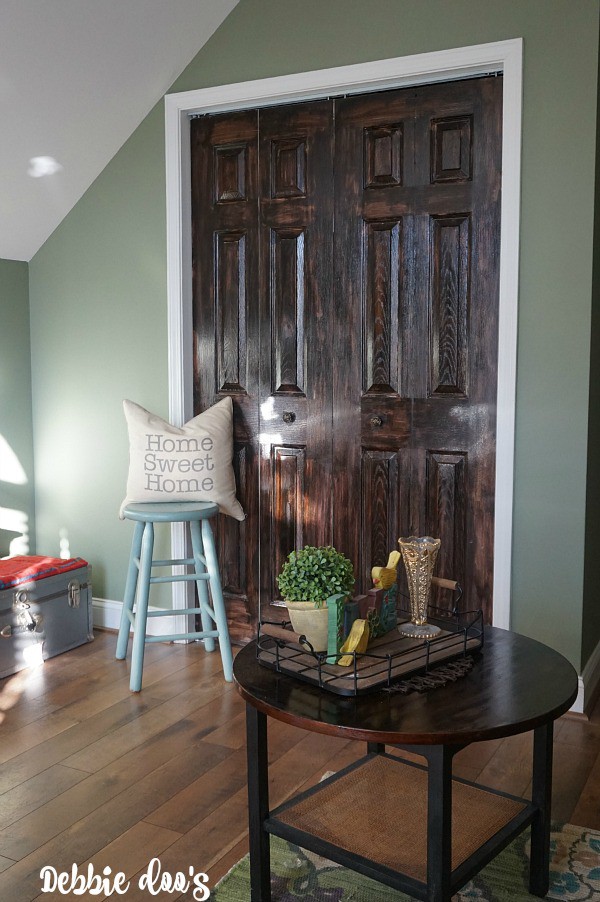
By following our step-by-step instructions, you’ll be able to elevate the aesthetic appeal of any plain white door, adding warmth and sophistication to your space. This guide covers five essential steps: making preparations, sanding the door, applying the base coat, creating the wood grain effect, and sealing and finishing the door. Learn more in the FAQs section below.
1. Make preparations
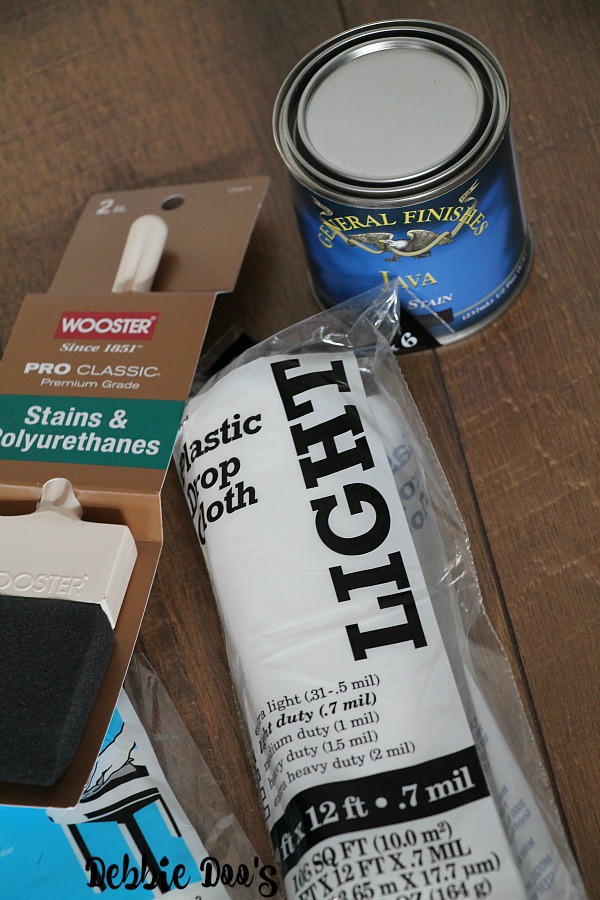
- Gather all materials: gel stain or wood stain, pre-stain wood conditioner, clear polyurethane, rubber gloves, plastic drop cloth, stain brush, cheesecloth, and fine-grit sandpaper (around 220-grit). We used both gel stain and wood stain to obtain a two-tone color.
- Remove any hardware from the door (e.g., handles, locks) and set them aside.
- Lay the plastic drop cloth on the ground to protect your floor from any stains.
- Clean the door surface with a damp cloth to remove any dirt, dust, or grime, and let it dry completely.
2. Sand the door
- Lightly sand the entire door surface using fine-grit sandpaper to create a slightly rough texture, which will help the stain adhere better.
- Wipe down the door with a clean, damp cloth to remove any sanding dust.
3. Apply the base coat
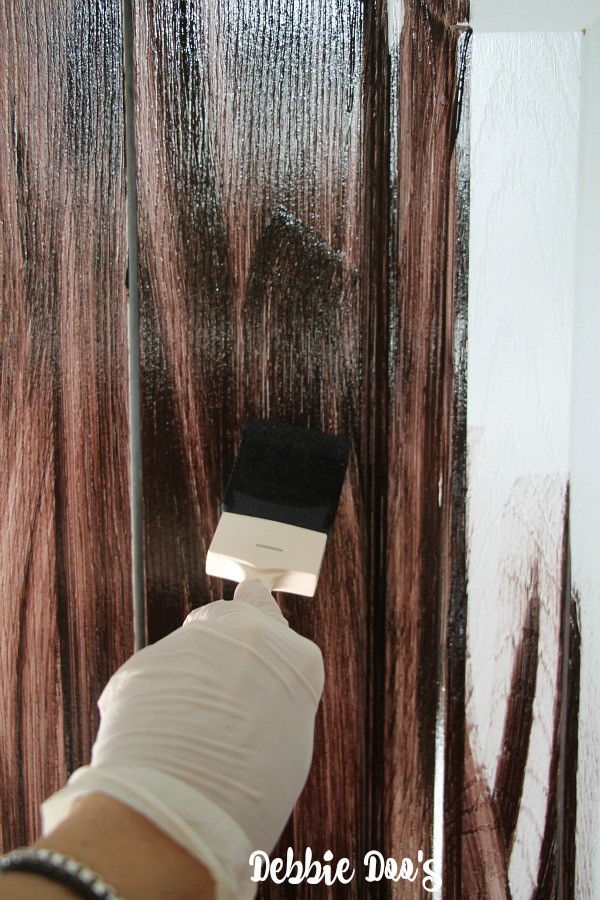
- Put on your rubber gloves to protect your hands from the stain.
- If you are using a wood stain, apply a pre-stain wood conditioner to help the stain absorb more evenly. Follow the manufacturer’s instructions for proper application and drying time.
- Apply a thin, even coat of gel stain or wood stain to the door using the stain brush. Use long, straight strokes, following the direction of the wood grain pattern you want to create. If your door has panels, start with the panels and work your way out to the outer edges of the door.
- Allow the base coat to dry completely, following the manufacturer’s recommended drying time.
4. Create a wood grain effect
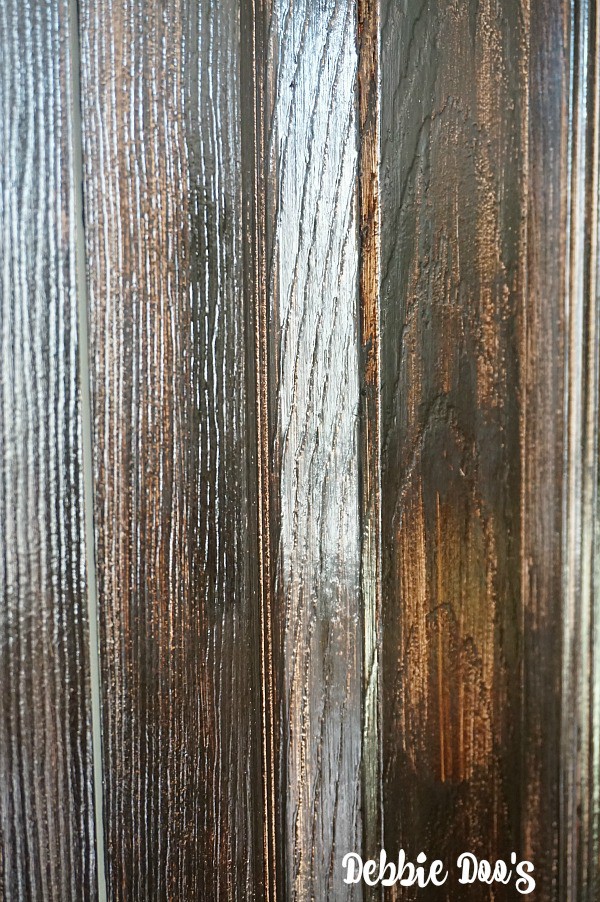
- Apply a second coat of gel stain or wood stain to the door, using the same technique as above.
- While the second coat is still wet, use the cheesecloth to gently wipe off excess stain, following the direction of the wood grain pattern you want to create. This will help reveal the wood grain effect.
- Experiment with different techniques to create a more realistic wood grain pattern. For instance, twist or fold the cheesecloth, or use a wood-graining tool to add texture and variation to the pattern.
- Allow the door to dry completely, following the manufacturer’s recommended drying time.
5. Seal and finish the door
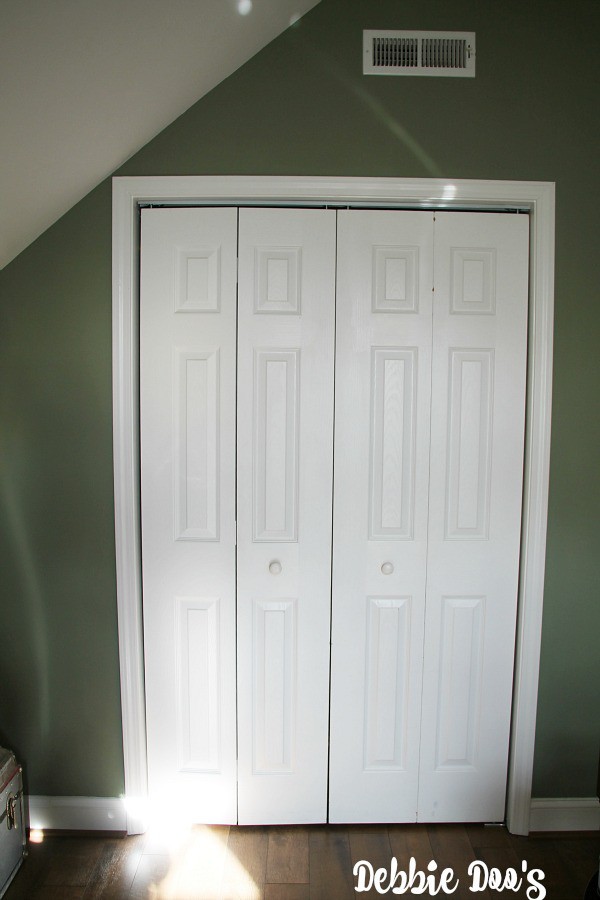
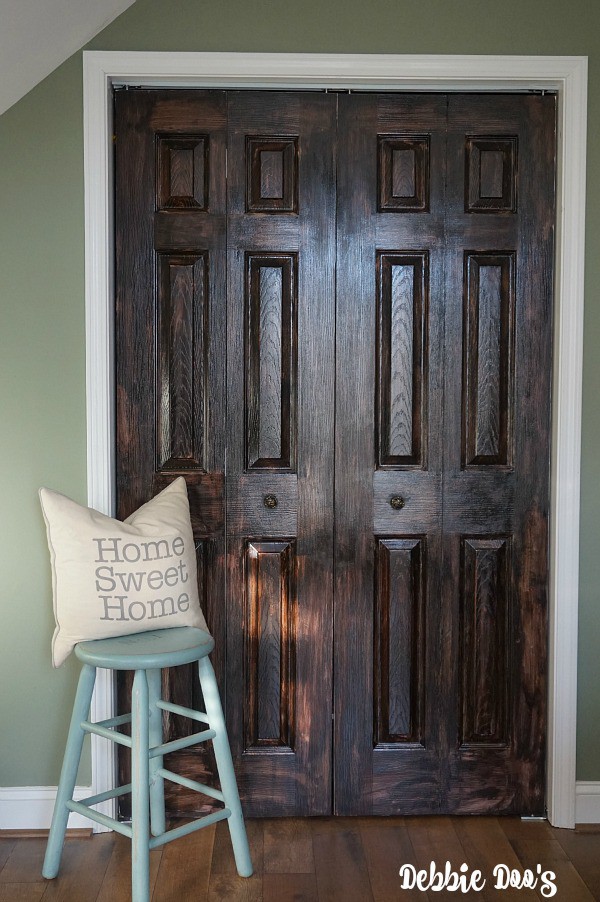
- Apply a clear polyurethane or similar topcoat to the door using a clean brush, following the manufacturer’s instructions for application and drying time. This will seal the stain and protect the door from wear and tear.
- Once the topcoat is dry, reattach any hardware you removed from the door.
- Reinstall the door and admire your work!
FAQs
Learn more about dealing with paint that looks like wood.
How do I paint a garage door to look like wood?
Painting a garage door to look like wood involves a few additional considerations compared to a regular door due to its size, material, and outdoor exposure. For instance, you should apply a coat of primer suitable for the garage door material (e.g., metal, fiberglass, or vinyl) using a paint roller. If desired, use a fine paintbrush and a slightly darker or lighter shade of paint to add knots and other wood details to the door.
How do I paint concrete to look like wood?
Compared to a white wooden door, painting concrete to look like wood requires a few extra steps. For example, you must repair any cracks or damage in the concrete with a concrete patching compound. It is also necessary to apply a concrete primer using a paint roller, in order to help the paint adhere to the concrete surface and ensure a long-lasting finish.
Is there regular or spray paint that looks like wood?
Yes, there are both regular and spray paints available that can mimic the appearance of wood. For example, specialty regular paints are formulated to create a faux wood finish. They typically come in sets, with one color for the base coat and another for the wood grain effect. You’ll need to apply these paints in layers, following the specific instructions provided by the manufacturer, to achieve the desired wood-like appearance. Spray paint that mimics wood is also available, and it’s typically sold as a “faux wood grain” or “wood finish” spray paint. These paints usually require multiple coats to achieve the desired effect. When using spray paint, it’s essential to follow the manufacturer’s instructions for application, distance, and drying time. Be sure to work in a well-ventilated area and protect any surfaces you don’t want to be painted with drop cloths or painter’s tape.
How do I paint metal look like wood?
Painting metal, such as a metal door, to look like wood is similar to working with a white wooden door. However, you need a metal primer and paint suitable for metal surfaces, in two different shades for the base coat and wood grain.
What paint colors look like wood?
To create a faux wood finish, you’ll need to select paint colors that closely resemble the natural tones of wood. Wood comes in a variety of shades, so you can choose a combination of colors that best match the type of wood you want to replicate. Here are some common wood types and their corresponding paint colors:
- Pine (base coat + wood grain): light beige or pale yellow + medium golden brown
- Oak (base coat + wood grain): light tan or pale gold + medium to dark brown with a hint of red
- Cherry (base coat + wood grain): light reddish-brown or pinkish-tan + dark reddish-brown
- Walnut (base coat + wood grain): medium to dark brown with a hint of red + dark chocolate brown
- Mahogany (base coat + wood grain): dark reddish-brown or maroon + deep reddish-brown or dark chocolate brown
- Maple (base coat + wood grain): creamy white or very light beige + light to medium golden brown
How do I create distressed painted wood?
To create distressed painted wood, you’ll need to sand the wood surface, apply primer (optional) and paint, then use sandpaper to strategically remove paint in areas where natural wear and tear would occur, such as edges and corners. This process gives the wood a rustic, vintage appearance by revealing the wood or underlying paint layers in some areas. Creating a distressed wood effect without painting or staining is also possible.
Conclusion
Whether you’re a seasoned DIY enthusiast or a beginner looking to experiment with new home improvement projects, this guide provides you with the knowledge and confidence to create a convincing wood grain effect that will leave your guests impressed. Be sure to return to this page and let us know how your wood-like painted door turned out. For bolder colors, find out how to paint your pantry door red.


Your doors look amazing. I did the hall bathroom vanity in gel stain this year, it does look fabulous, however I thought it was a ton of work.
Really? I find painting furniture much more tedious lol. I didn’t thing it was bad at all. I will have to check out your vanity.
Debbie can u tell me which goes on first how long before u do ur stain please
Hi. Can I do this Technique on a laminate vanity top? I love he wood look.
I am not sure about that. I would say yes, but it keep in mind it will take a while to dry.
You can, I did that to mine. Be sure you use a good sealer. Better yet, an epoxy coating. I didn’t do that to mine, but I’m going to add that soon.
That turned out beautifully, Debbie! Love your tobacco wood door, too!
The door turned out fantastic Debbie and it looks like wood. Great job!
The door looks so nice Debbie. Thanks for sharing!
Thank you so much!
Debbie when doing the white doors for inside which goes on first I just bought 12 doors and the wood look is what I’m wonton to do I wrote down what to buy but can u tell me which goes on first and how long before I do the next step please here is my email
[email protected] (6066824376 ) or u can text me love ur doors a lot. Thanks so much
Two coats of GEL stain first and let completely dry over night. Then you can go over it the next day with a traditional stain of a varied color, then wipe as you go lightly to get that wood effect. I only did the outside of the doors, not the inside. Good luck.
Hi Debbie
I have the same question I’m wanting to do my garage doors do the stain gel first leave over night then the stain Tks for sharing yours look amazing
I am not sure if it would work on metal. I would google it gel stained garage doors. I don’t want to steer you in the wrong direction on such a big project. I am thinking it is out there somewhere.
Perfect timing! Exactly what I was planning for 2 doors in the laundry room but was unsure of where to begin. The gel stain is the perfect solution! Thanks!
Awesome Rita! Good luck. I didn’t think it was difficult. Just a little time consuming and you have to be patient. The look is perfect though I think anyhow.
Debbie I used gel stain on my stairs when I re-did them. Is there a reason you went over the gel stain with regular stain? Your doors are just beautiful – all of them.
Not really, I was just experimenting and wanted a two toneish color.
Do you think you could get the 2 tone using gel stain each time?
Yes I do. I would experiment on a plain board first to see the results.
How do you think this would work on my green front doors? Exterior is green, inside a nice wood.
Rosemary, I am not sure. I would perhaps sand it down first? to remove the green. And then I am sure it would work.
Good job on the door; love the somewhat weathered natural look. All of your painting projects have that natural touch. You are a pro Debbie. I think you should come to my house and do my kitchen cabinet. I’m afraid to tackle such a large project but it really needs to be done!
Beautiful, Debbie! Doors are not easy but you make it look so simple. Love that dark rustic look.
I agree, doors are not easy. I do not care for painting them all that much, but this was easier imo:)
It turned out great. I love the color of the stain. I’m loving the pantry door too.
Hi Debbie,
Great Job! Love your blog, such a talented lady 😉
I understand that you used 2 colors of stain on the project the first being ‘General Finishes’ Java in the gel stain done with 2 coats.
What was the second stain color used to get the 2 toned look on your particular doors? I know you mentioned it was regular liquid stain that you wiped in as an accent color.
Have a great day!
Sondra
It was some I had left over in the cabinet outside. I want to say the color was Java. You can use any color you want depending on the tone and look you are going for.
what paint color is that green wall?
I just came across this. Thank you for sharing!!!
Would this work on trim/baseboards that have been painted white?
Thank you, again!
I don’t see why not! It should work just the same.
Debbie..I love following you and your projects, we have similar taste. I LOVE rustic and my husband recently made wood shutters for all our outside Windows. Also adding some wood corbels for architectural interest. My question is…does the gel stain work over painted wood and over metal doors?? Thank you?
I don’t know if it would work over a metal door. Over painted wood I assume so. However, you want to obviously choose a color that would be darker than your painted wood that exists.
I did my metal extrior door with the Gel stains .. However I painted it with a flat paint called copper pot first.. It turned out great.. still very nice even without a top coat and that was 3 years ago..but it did take along time to dry.. before it wasn’t tacky anymore. I love it so much I really want to do the bathroom cabinets which are a moss green I just don’t know if I have to repaint or if I can leave the green and just use the gel..
Can u post a pic of ur metal door. I really wanna do mine.
I don’t have a pic of a metal door. What you see is what I did:)
Hey Debbie,
I know this is an older post, but I saw the way you’d stained this painted door and fell in love.
I’d like a lighter stained door than yours, but the technique you used is wonderful.
My question is which stain did you use first? Did you go lighter then darker? Or darker gel and then lighter normal stain?
Thanks in advance for your help!
CJ
Hi Cj, I used the darker first, then the lighter on top. You can do it whatever way you like. Just pick a lighter gel color. Good luck.
Thanks, Debbie.
I can’t wait to try this! I’ll let you know how it goes!
CJ
Love this! Did you have to use a wood conditioner/primer before you stained it?
No primer before.
I love this and want to do this? How much gel stain did you need? Is one small can enough, or did you need to purchase a large can?
I bought the medium size can and it was more than enough.
WoW !! Your CRAFT ROOM looks fantastic. The INDUSTRIAL curtain rods are
a perfect touch… the unexpected. I have always liked that style of hanging light.
I was going around your site and found your industrial look shelving A.N.D. your
painted door !! Luv it !! –thank you for sharing.
?hugs. -Linda
I have peeling white painted doors. The previous owner painted latex over oil based causing all 15 doors to peel. I cannot sand them much because they are the grained finish, not smooth type doors. I was told to lightly knock off the peeling and use a good primer to prevent further peeling then paint. Can I do your technique and stain over primer? Seems much easier than painting all 15 and love the look!
I don’t see why not,however I would just do one test area first to see if you like it.
Hi looking to do just this project myself, I am very much a step by step person LOL and video is great but I don’t see any step by steps here no worries I am going to be adventurous but just wondering what the cheese cloth is for? Wish me luck!!
I used the cheese cloth for in between wiping the gel to get more of that wood look with variations of color.
Loving your doors! I made a shelf out of recycled wood. Some pieces have a little red paint, but most of it is not painted or varnished. Some pieces are chipped, so I have to put puddy on it. Do you think I should paint it all one color first? Or do you think putting gel stain on will cover it?
If it were mine I would probably do the gel stain, wipe, and sand. You want it to look rustic I assume. I think the red paint showing through and little roughness would look great.
Well, well, well…. look who’s tutorial popped up when I googled wood grain door. We have to do something to our rental house front door, so paint it or fake it?
WOW, that is awesome!
What color stains did you use?
I used Java for the gel stain and a lighter color to go over it. I believe the other color was like a oak.
Was this a wood door? the door I want to do this to is metal (I think) I know it’s not a wood door do you think it’ll work the same. I realize this post might be old hopeing you’ll still get to respond thanks.
I do not think the technique will work on metal. The stain will not dry right.
We just had bead board installed and stained in our tray ceiling inserts in our hallway. They came out splotchy and devoid of the wood grain look I expected. I wanted it to mirror the wood floors below. Do you think it would be possible to use gel stain over this first stain to get the rich Grain look you achieved?
Yes, I do think it would work out fine. I would do a very small test first though.
Hi! Wanting to do this to my pantry today! Did you do any sanding or prep work before using the stain? Yours looks wonderful!
No I did not. I did the sanding after.
I tried this technique. I can’t get the gel stain to rub off and show any white when I applied regular stain and wiped it off?
Did you do it while the gel was still somewhat wet? You have to rub hard and give a little elbow to it. You can do it!
I absolutely love this! My home is decorated in the Farmhouse style and all of my furniture I painted my self (all white). Now I am looking to redo the tops but didnt want to sand them all down and stain. This is the perfect alternative! Will this work over Chalk paint sealed with polyurethane? Thank you so much for sharing this! I’m so excited to try it!
I am not sure about that Becky. I think it will because the gel stain is pretty thick and adheres. I would recommend however, giving everything a light sanding before you start.
I am wanting to take my white kitchen cabinets back to an 80s oak look. Wondering if this would work? And would I need to seal with something since it’s a high traffic and use area?
It should work. I would probably recommend a poly, to finish them. Depending on if you want high gloss or matte. They make both.
Could you please tell my which colors you used for the gel stain and the mini wax and which was the darker color. I am looking for almost the exact finish that you had
Java was the gel stain and then I used an oak stain. I can’t recall the exact color but it was lighter. Java was the base.
What colors (gel stain and Minwax stain) did you use on your white doors to get the look?
Love this. Great information!! Thank you!
I want to do something like this to my front porch railing. It is white wood but with exterior latex paint. Do you think process would work for outdoor?. It is a covered porch but I am sure rain would still get it to regularly. Thank you in advance for any insight before I begin.
I would not recommend it outdoors.